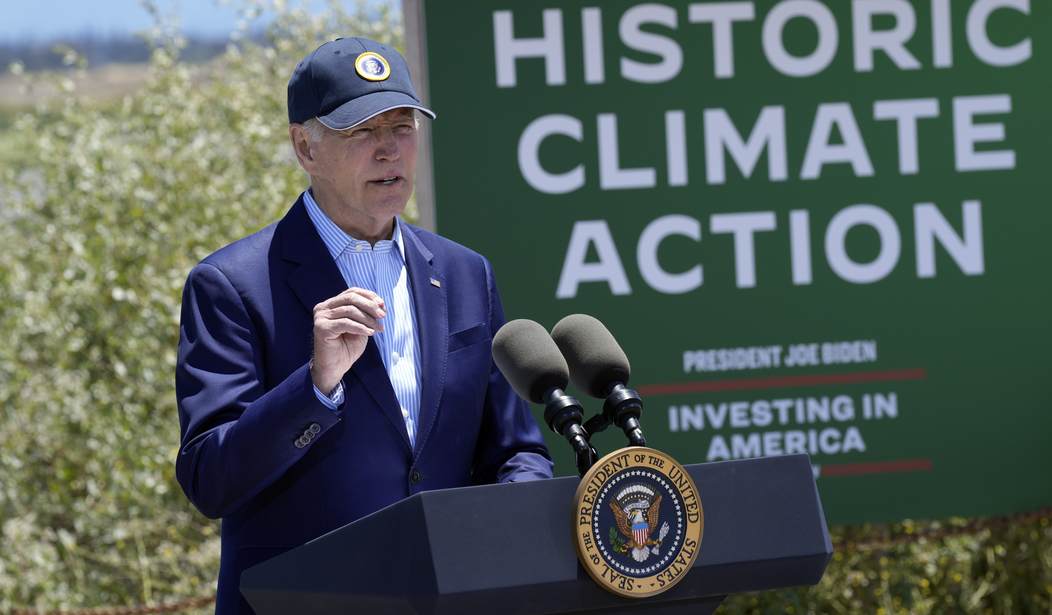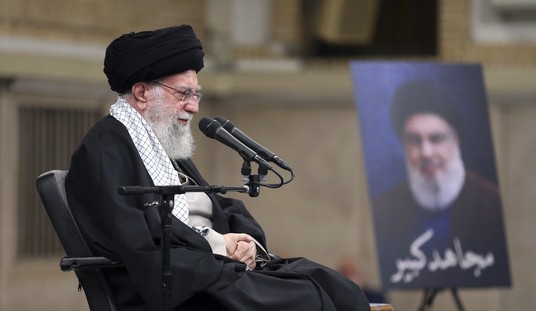We’ve been hearing it for years now from Joe Biden. Back in June 2021, he recalled a supposed visit to the Pentagon while he was Vice President during which he claims he asked the nation’s military leaders about the “greatest physical threats” facing America.
“This is not a joke,” he said. “Y’know what the Joint Chiefs told us the greatest threat facing America was? Global warming!”
Biden further explained, “Because there’ll be significant population movements, fights over land, millions of people leaving places because they are literally sinking below the sea in Indonesia. Because of the fights over what is arable land anymore,” Biden mused, “we must commit to an ambitious climate action.”
Of course, all this was backdrop for the real change in the U.S. military from protecting America and its allies against foreign aggression to prioritizing “climate change as a grave peril to national security.” The Army’s primary mission in the Biden Administration is to develop new risk analyses, threat projections, and other strategies to combat an unseen, unarmed “enemy.”
Back in January, at a fundraiser for the Democratic National Committee, Biden asserted that, “If we don’t stay under 1.5 degrees Celsius, we’re going to have a real problem. It’s the single-most existential threat to humanity we’ve ever faced, including nuclear weapons.”
Just this week, in the face of the Hamas massacre of over a thousand Israelis and foreign visitors, the beheading of babies, the rape and torture of women of all ages, and the additional assaults from Hezbollah encampments in nearby Lebanon, Biden spokesman John Kirby reaffirmed Biden’s long-held public viewpoint.
In the middle of a hostage crisis, Kirby, who serves as National Security Council coordinator, told reporters that Biden and his administration still believe that climate change is “the largest threat facing the U.S. and the world since it is capable of ‘wiping out all human life’.”
Recommended
Notice the omission of one key word from Kirby’s statement – “immediate.”
Back in January, the only obvious threat to world peace was the Russia-Ukraine war, and people feared Vladimir Putin might become willing to unleash his nation’s vast nuclear arsenal rather than face possible defeat.
Even then, the Bulletin of the Atomic Scientists announced with grave sadness that its Science and Security Board had moved the hands of the Doomsday Clock forward. They told the world, “The Clock now stands at 90 seconds to midnight – the closest to global catastrophe it has ever been” in its 75-year history.
With Israel declaring war on Hamas, and effectively against Iran, where might that clock stand now?
To be sure, weather events often bring death and destruction, but these are localized disasters (hurricanes, tsunamis, tornados, and the like). Forecasters have plenty of time to warn the masses, and many make temporary moves to escape what Mother Nature has been bringing to Earth perhaps as long as it has existed.
But a nuclear holocaust will bring little if any warning, just as the Hamas assault on babies and concert-goers on a Sabbath morning was largely undetected in advance.
Unconvinced that Biden is wrong?
According to the International Campaign to Abolish Nuclear Weapons, “A single nuclear bomb detonated over a large city could kill millions of people. The use of tens or hundreds of nuclear bombs would disrupt the global climate, causing widespread famine.”
ICANW adds that it only takes 10 seconds for the fireball from a nuclear explosion to reach its maximum size. The blast kills people close to ground zero and causes lung injuries, ear damage, and internal bleeding further away. The extreme heat causes severe burns and ignites fires over a large area, which coalesce into a giant firestorm. Even people in underground shelters face likely death due to a lack of oxygen and carbon monoxide (NOT carbon dioxide) poisoning.
A recent essay in Time states that explosions, the electromagnetic pulse, and the radioactivity from nuclear explosions aren’t even the worst part. “A nuclear winter is caused by the black carbon smoke from the nuclear firestorms. As the smoke spreads, it “makes Earth freezing cold even during the summer, with farmland in Kansas cooling by about 40 ° F and other regions cooling almost twice as much.”
According to a 2022 report in Nature, over five billion of the Earth’s 8 billion people could starve to death, including 99 percent of the people in the U.S., Russia, Europe, and China. The reason? Most black carbon smoke would stay in the Northern Hemisphere where it would likely be produced (as these nations bomb each other to oblivion). Moreover, temperature drops harm agriculture more at high latitudes.
What does all this mean? That Africa, South America, and southeast Asia (including India) might not be that heavily impacted by a nuclear holocaust that would essentially eradicate all life in the Northern Hemisphere? Would the nearly three billion left alive be able to thrive in the absence of the world’s previously leading economies?
On the other hand, there are those who say leaving three billion alive is not enough. Ted Turner, who once famously suggested an optimum world population of 250 million, more recently argued that the world population must be stabilized at no more than 2 billion, “or we’re just going to have more and more catastrophes.”
Entomologist Paul Ehrlich, author of The Population Bomb, told The Guardian in 2012 that the optimum population of Earth is about 1.5 to 2.0 billion people. He sneered, “If you want a battery chicken world where everyone has minimum space and food and everyone is kept just about alive you might be able to support in the long term about 4 or 5 billion people. But you already have 7 billion. So we have to humanely and as rapidly as possible move to population shrinkage.”
Back in 2006 University of Texas ecologist Eric Planka – that year’s Texas Distinguished Scientist – told the Texas Academy of Science that 90 percent of his fellow human beings must die in order to save the planet. War and famine, said Planka, could not accomplish his goal.
Disease offers the most efficient and fastest way to kill billions, said Planka. Not AIDS, because it is too slow at killing, but diseases like Ebola are efficient enough to wipe out billions if properly managed. In Planka’s utopia, "Every one of you who gets to survive has to bury nine.”
So maybe President Biden is looking at things from Planka’s perspective. “Nuclear war – meh. Only kills five billion. Dr. Fauci and his pals in China are working on ways to kill just about everyone – except those chosen by the state to survive.”
But no. That cannot be it.
Back in 1964 Americans laughed at Sterling Hayden’s portrayal of an insane Brig. Gen. Jack D. Ripper in the movie Dr. Strangelove (Or How I Learned to Stop Worrying and Love the Bomb). Ripper orders a preemptive strike on the Soviet Union that only he has the codes to stop, leaving the White House in a panic as they learn of Russia’s doomsday machine that will launch enough missies to destroy all life on Earth if a single nuclear bomb hits the U.S.S.R.
Today, as members of Congress, university students and faculties, and jihadis from Harvard to Australia cheer the beheading of babies, no sane person is laughing about nuclear war.
And no sane person really believes that carbon dioxide emissions are a greater threat to humanity than a nuclear holocaust.
Not one.
Duggan Flanakin is a senior policy analyst for the Committee for a Constructive Tomorrow and a frequent writer on public policy issues.

























Join the conversation as a VIP Member